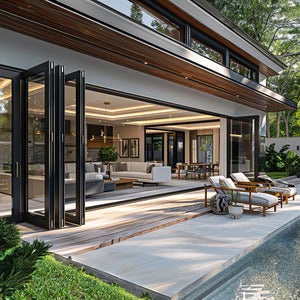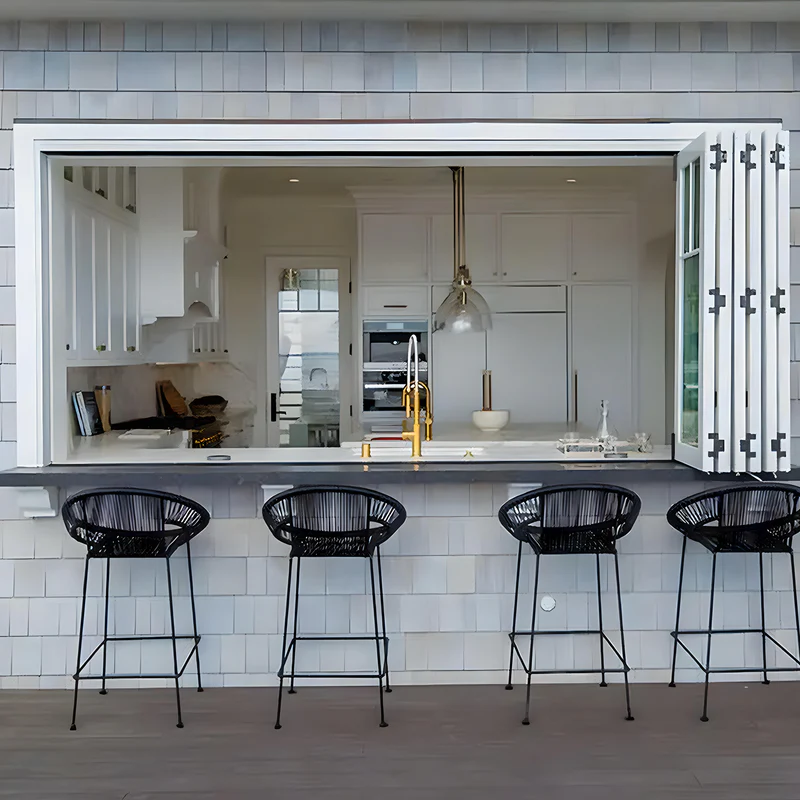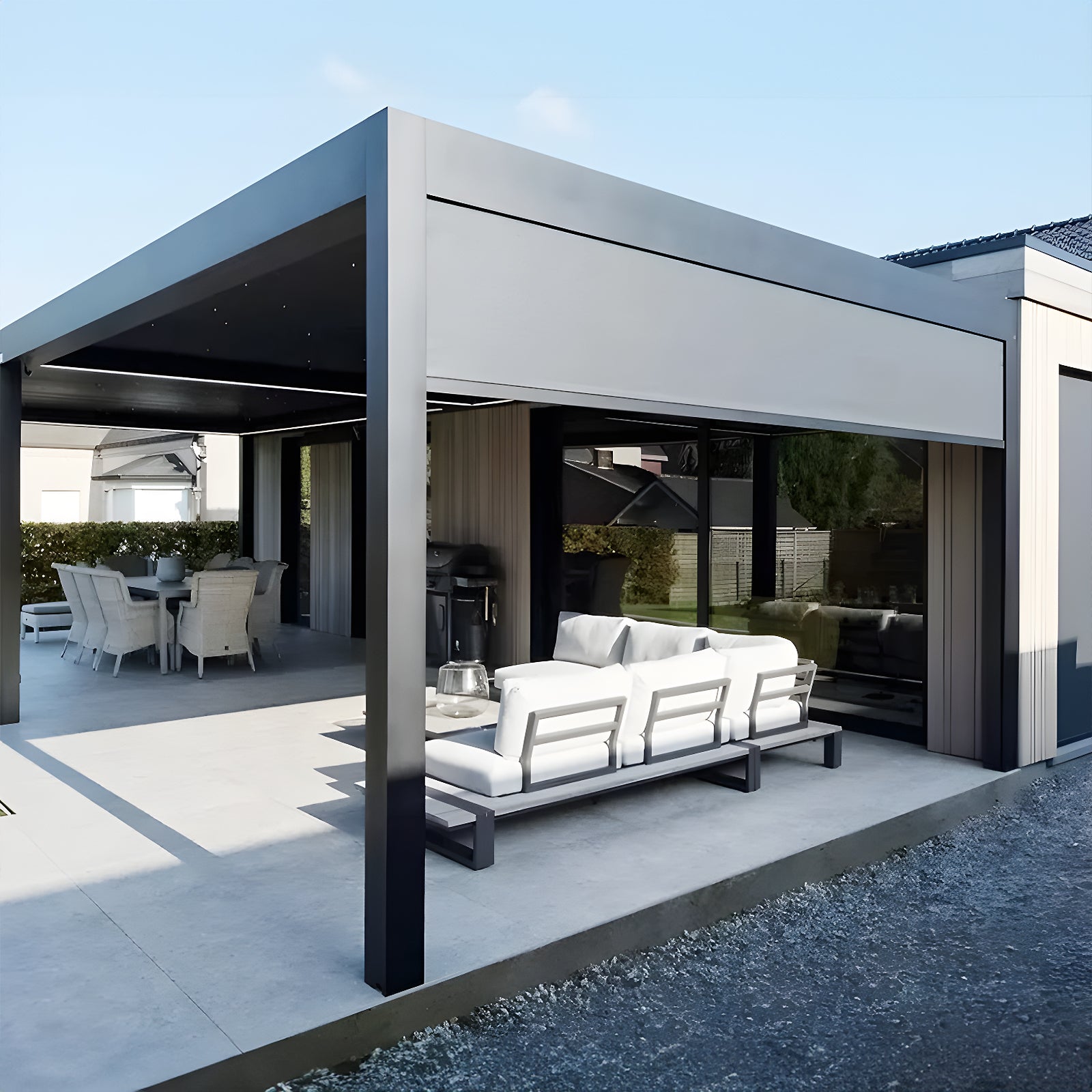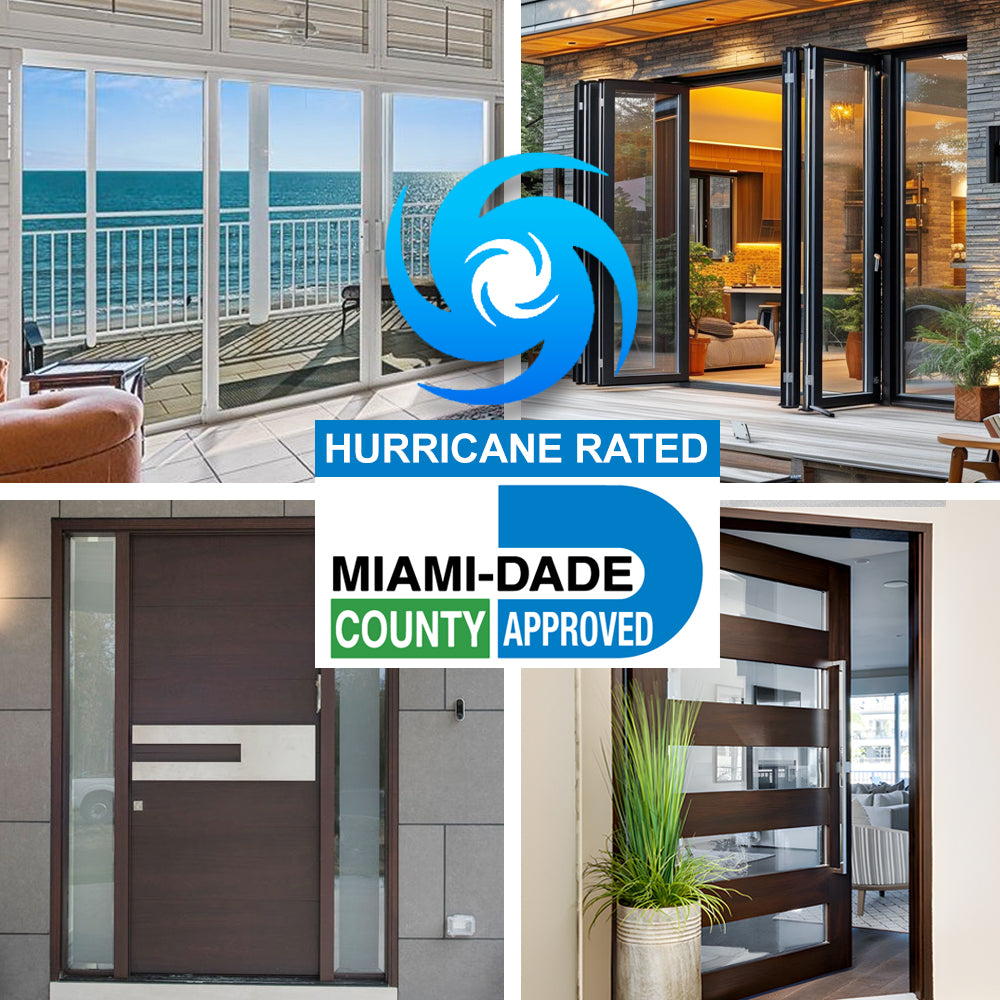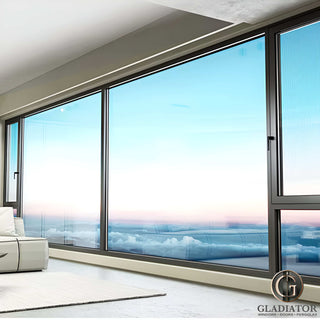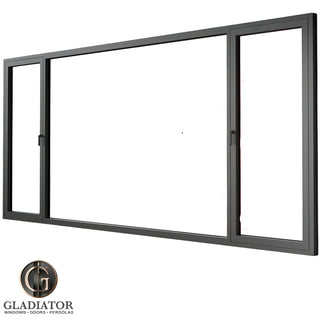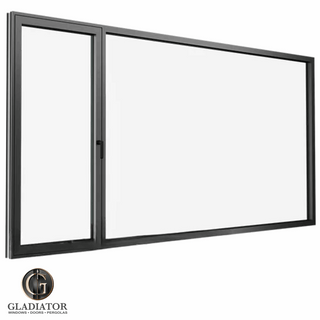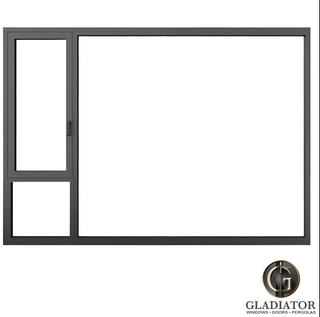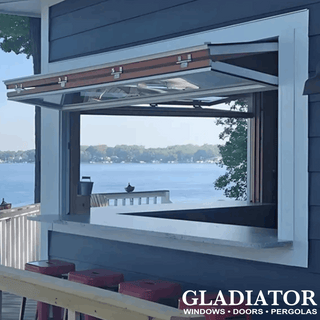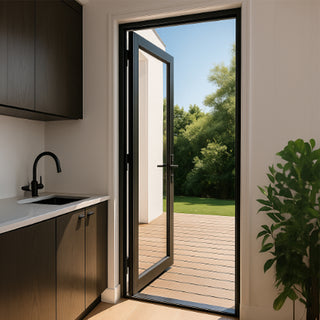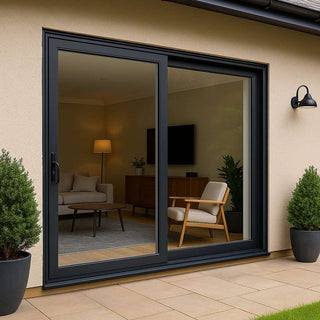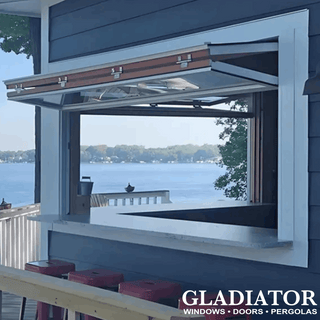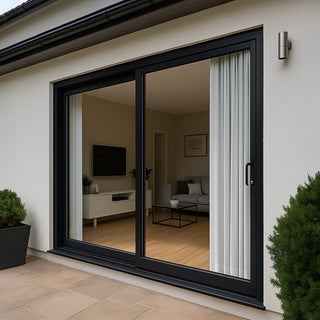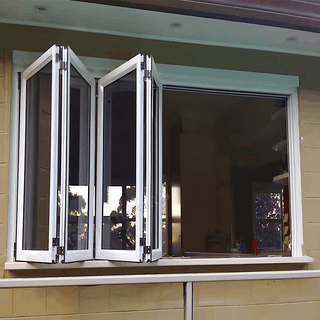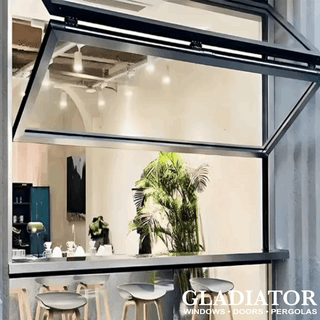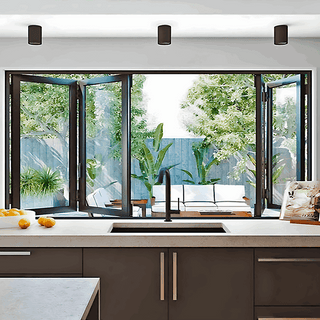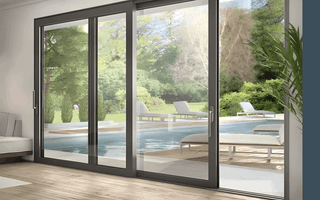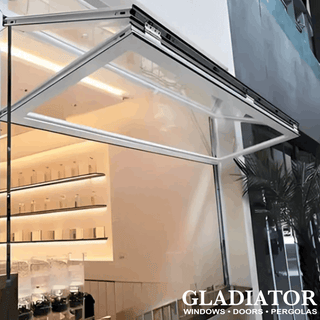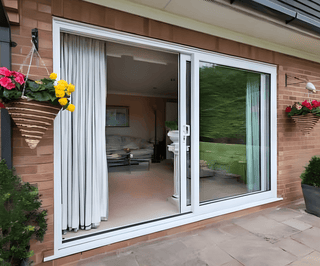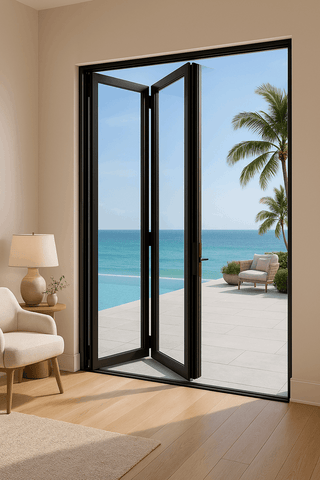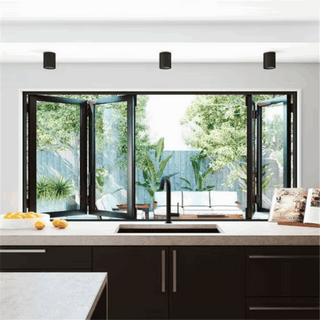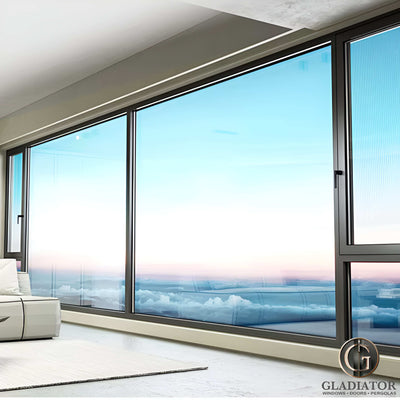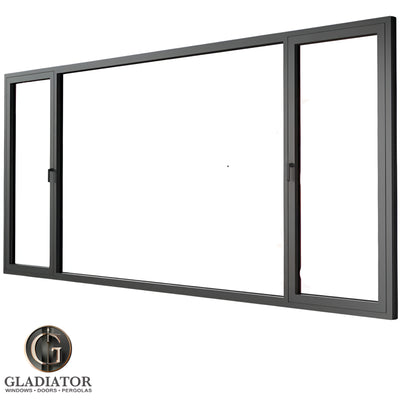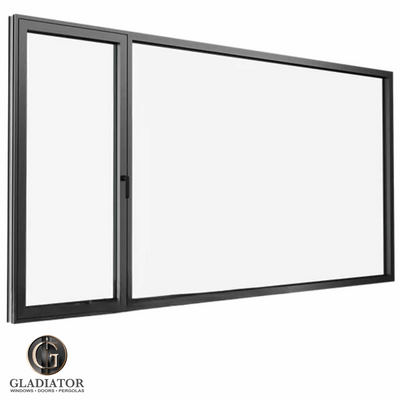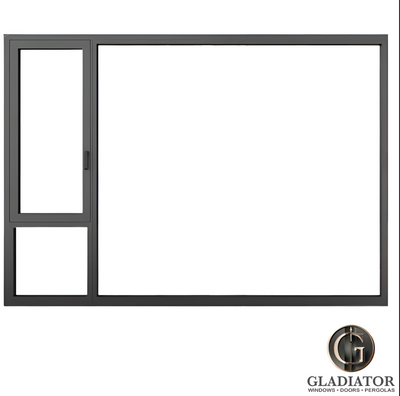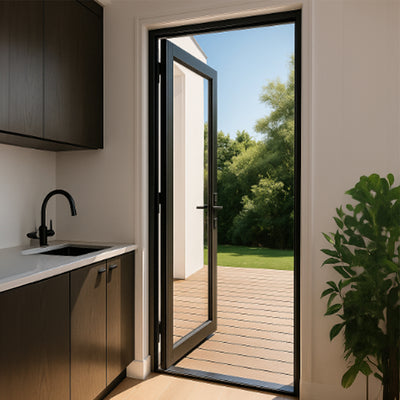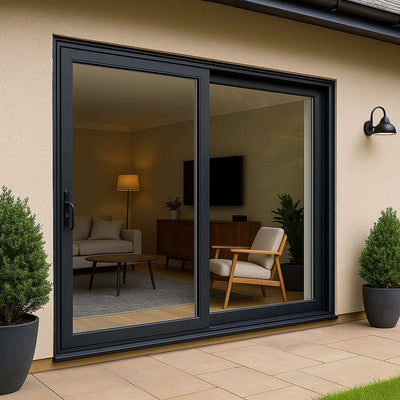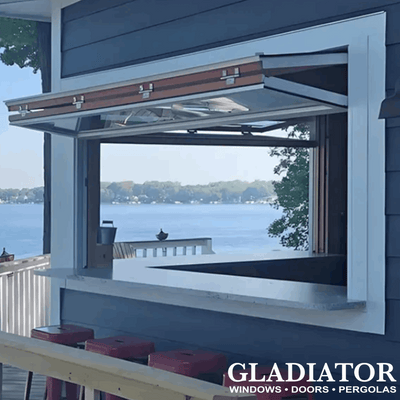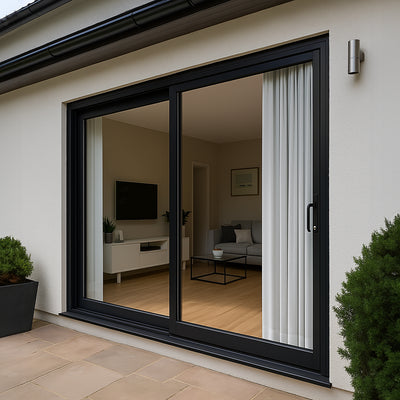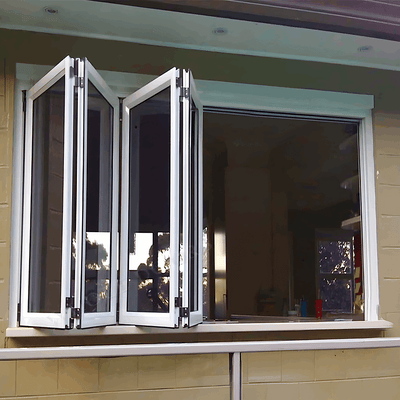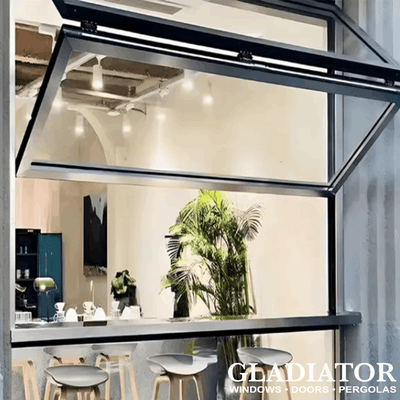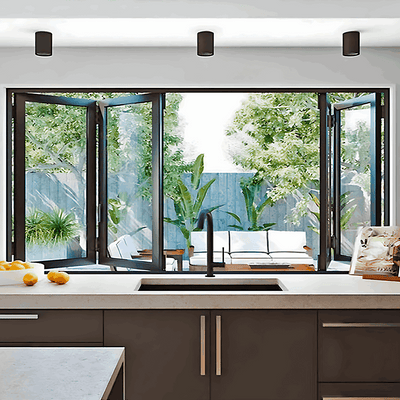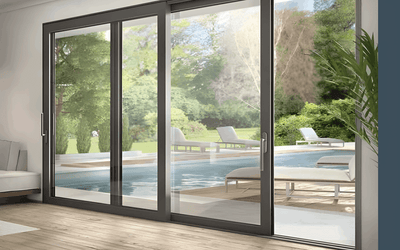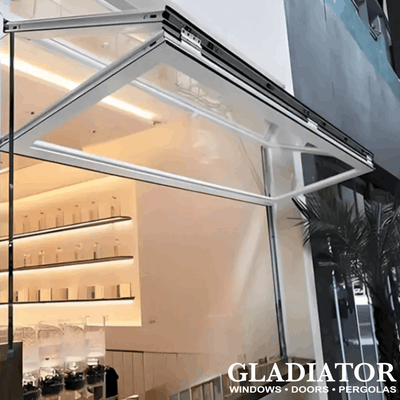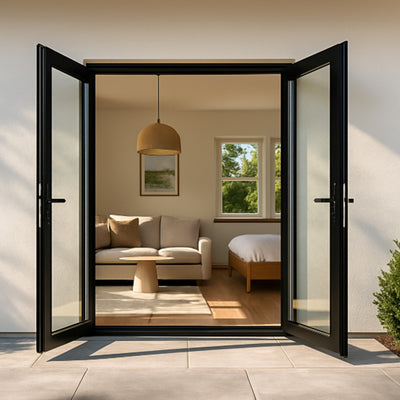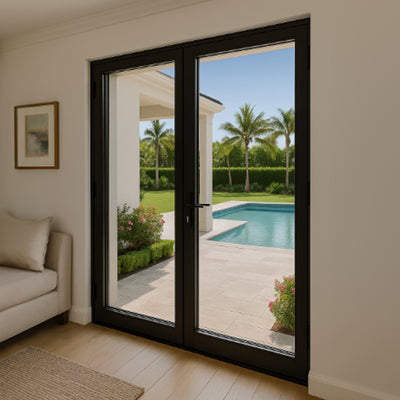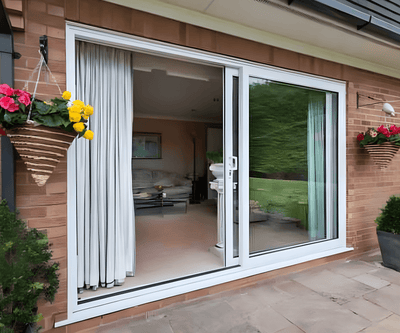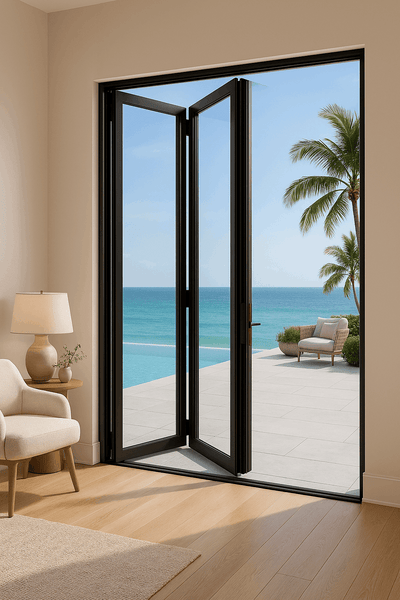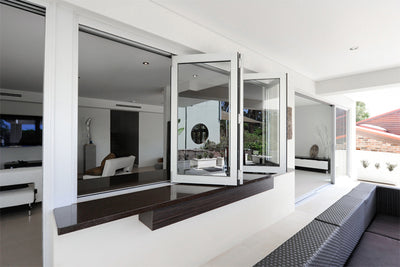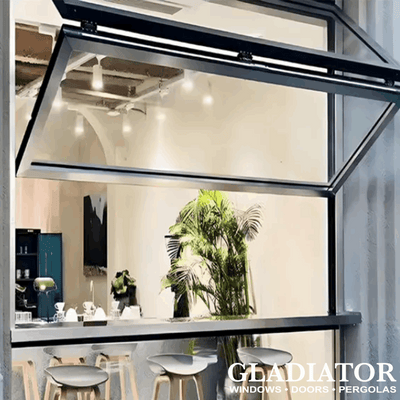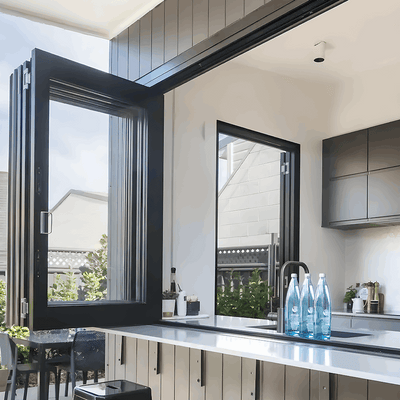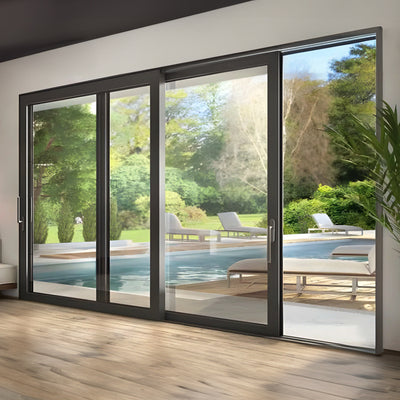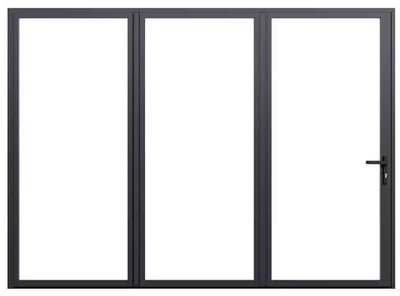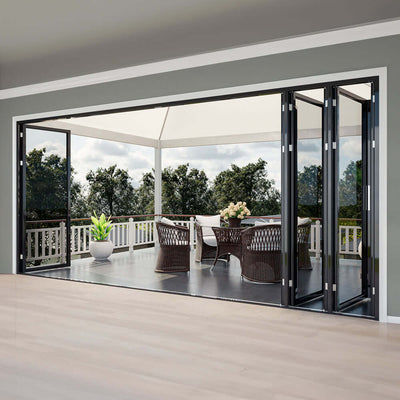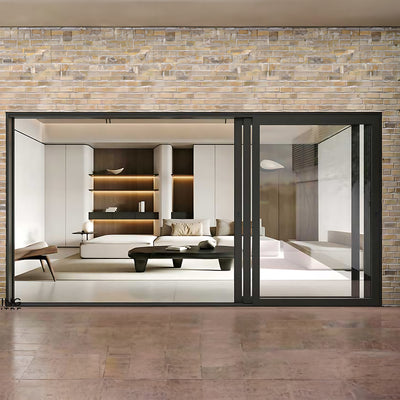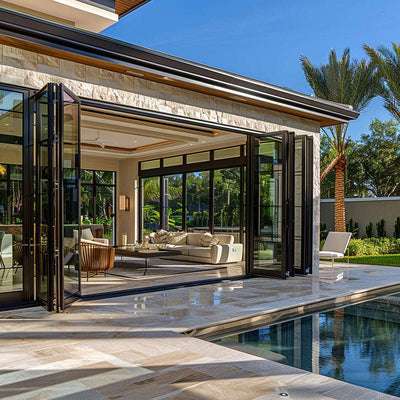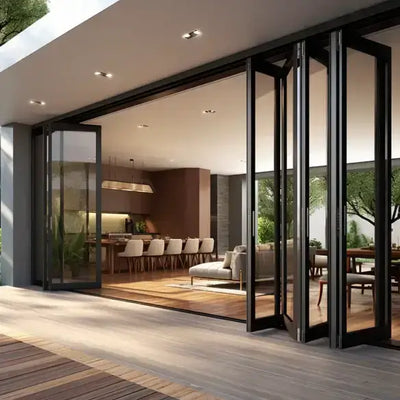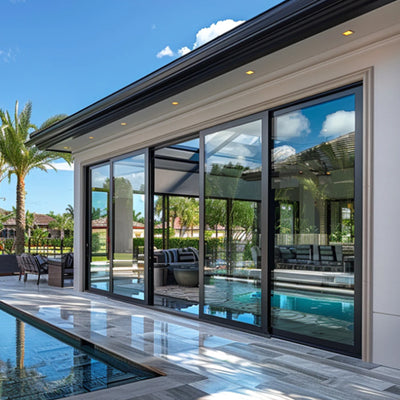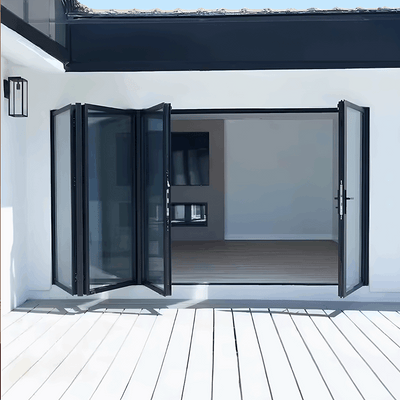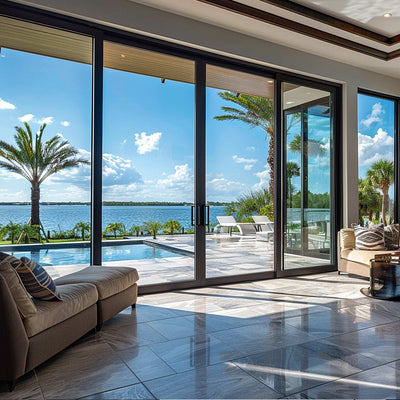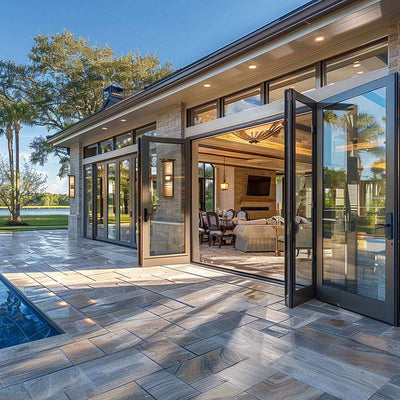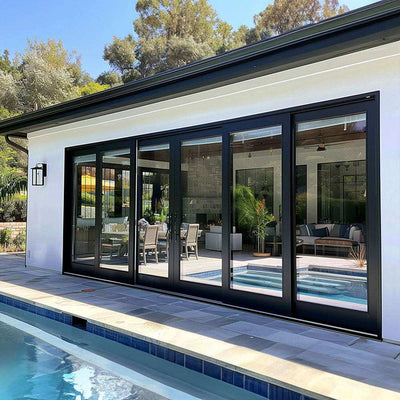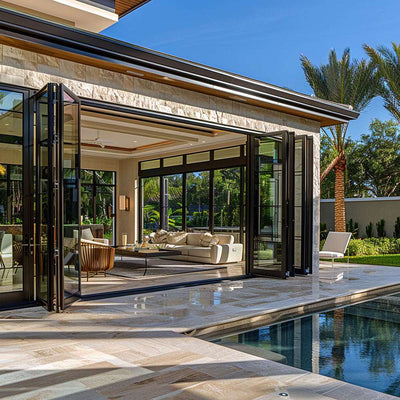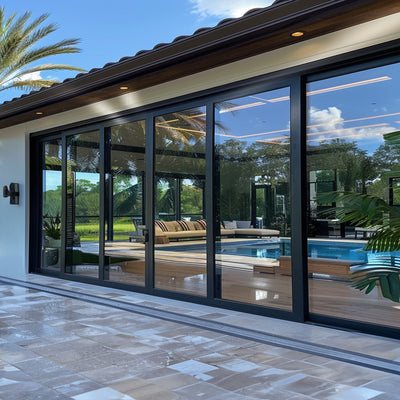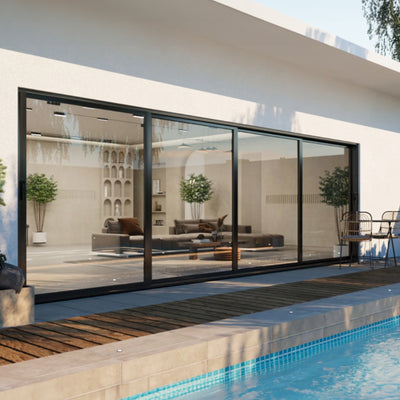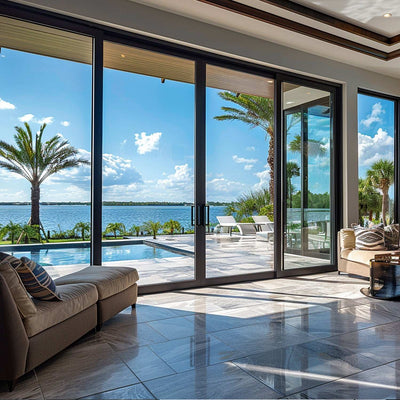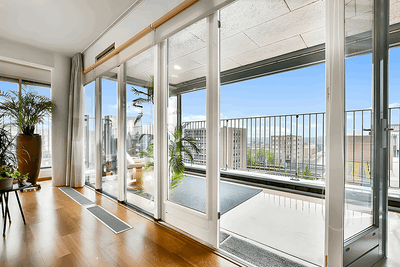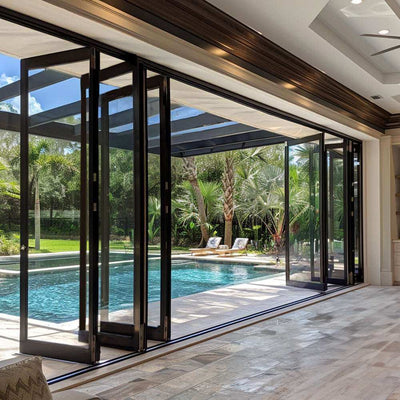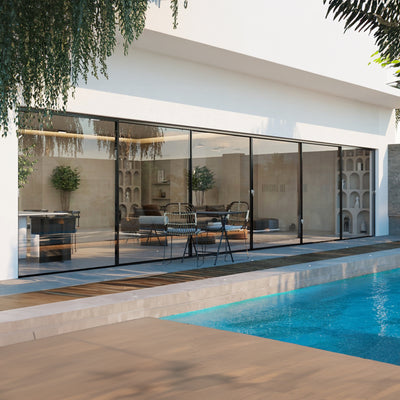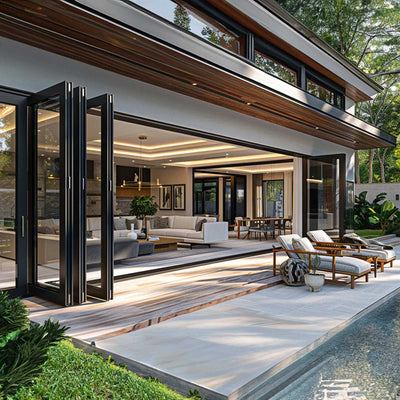The Science Behind Energy Efficient Sliding Doors
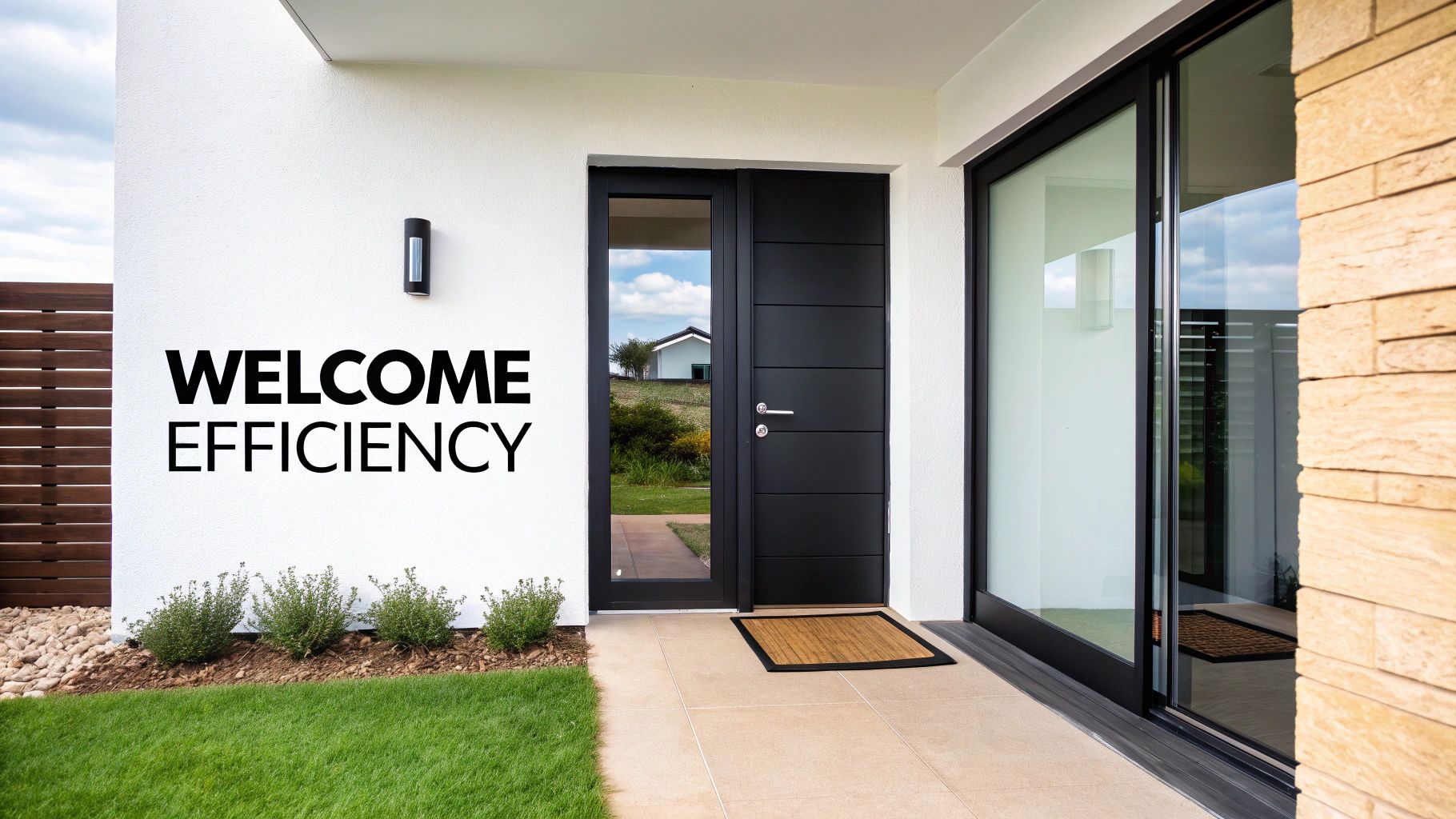
Energy efficient sliding doors are a smart investment, adding both style and substantial savings to your home. They offer more than just good looks; they contribute significantly to comfort and lower energy bills. But what's the secret to their efficiency? It all comes down to a combination of scientific principles and design features.
Understanding U-Value
A key factor in a sliding door's energy performance is its U-Value. This measurement tells you how effectively a door prevents heat transfer. A lower U-Value indicates better insulation, much like a thick winter coat. This translates to lower heating costs in winter and a cooler home in summer.
For optimal energy efficiency, aim for sliding doors with U-Values below 1.2. Energy Efficiency Ratings are crucial when selecting sliding doors. Modern designs incorporating advanced insulating materials can achieve U-values as low as 0.6. For a deeper dive into sliding door energy efficiency, check out this resource: Sliding Door Energy Efficiency. Understanding this metric helps you make informed choices about energy consumption.
The Role of Solar Heat Gain Coefficient (SHGC)
Another important consideration is the Solar Heat Gain Coefficient (SHGC). This measures the amount of solar heat that passes through the glass. A lower SHGC is best for warmer climates, helping to keep your home cool by blocking the sun's rays.
Conversely, in colder climates, a higher SHGC can be advantageous, allowing passive solar heating. Finding the right balance is key to maximizing comfort and energy savings year-round.
Air Leakage: The Silent Energy Thief
Air leakage can significantly impact energy efficiency. Even small gaps around the door frame can result in substantial heat loss and uncomfortable drafts. This is where weatherstripping and airtight seals come into play.
These features minimize air infiltration, ensuring a comfortable indoor environment and reducing the workload on your heating and cooling system. For more information on related topics, see: How to Master....
Putting it All Together: Choosing the Right Door
Understanding these key metrics—U-Value, SHGC, and air leakage—equips you to confidently select the most energy-efficient sliding doors for your home and climate. This knowledge translates to lower utility bills and a more comfortable living space. The initial investment in energy-efficient doors offers a significant return through reduced energy consumption and increased home value.
Game-Changing Innovations in Sliding Door Technology
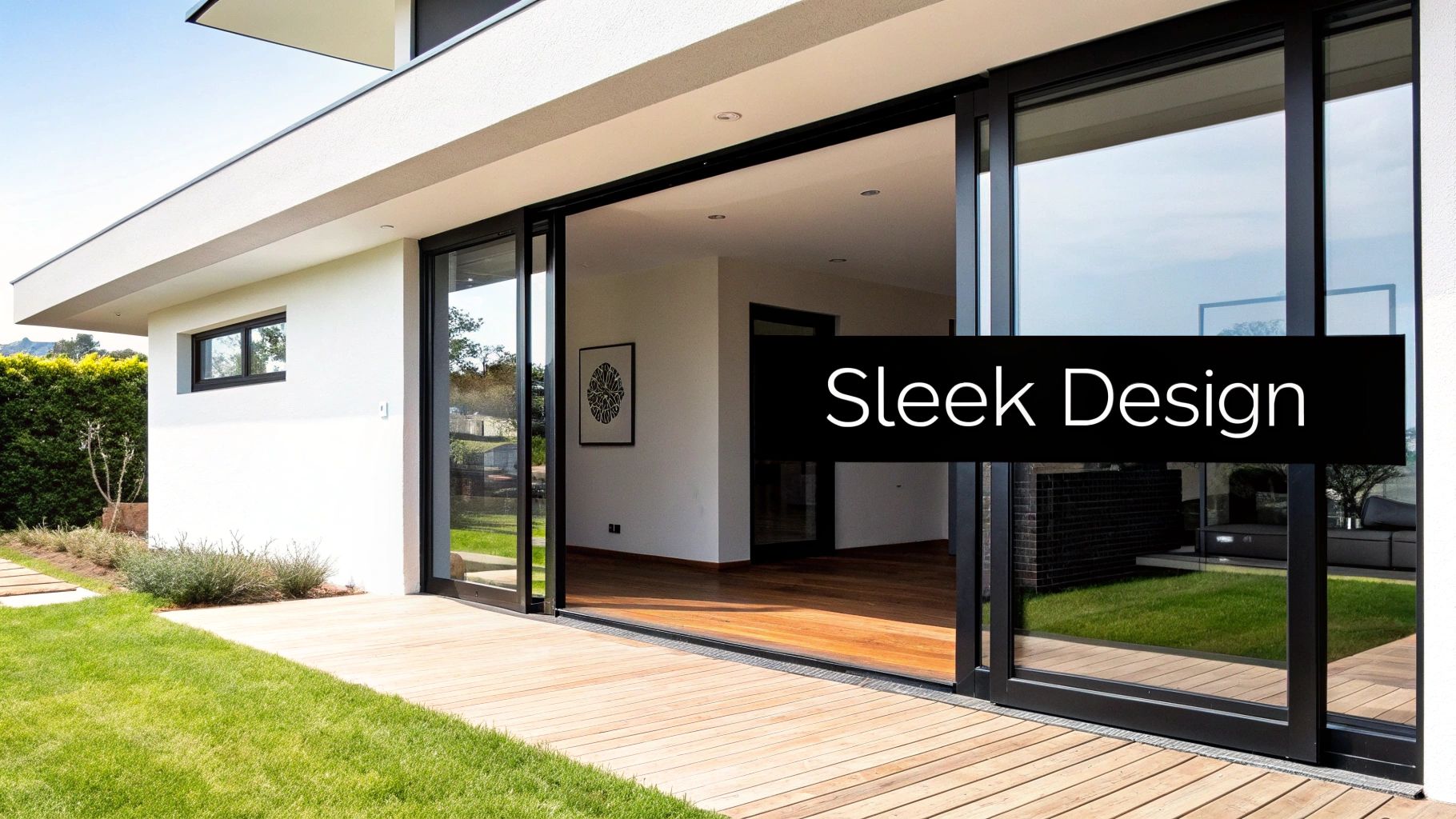
The world of sliding doors is no longer just about simple functionality. It's about incorporating impressive energy-saving features that make a real difference in your home. This shift is happening thanks to advancements in materials, design, and technology, all working together to maximize energy efficiency without compromising style or convenience. These innovations are a big win for homeowners looking to reduce their environmental impact and lower their energy bills.
Advanced Sealing Systems: Eliminating Drafts
One of the biggest leaps forward in energy-efficient sliding doors is the development of advanced sealing systems. Traditional sliding doors often struggled with air leaks around the frame, causing drafts and wasted energy. Modern designs, however, incorporate multiple layers of weatherstripping and airtight seals to combat this problem.
These advanced seals create a tight barrier against the outside elements. This prevents drafts and helps maintain consistent indoor temperatures, which in turn reduces the workload on your heating and cooling system. The result? Significant energy savings.
Smart Sensors and Automation: Optimizing Performance
Integrating smart sensors and automation is another exciting development in sliding door systems. Some models now use sensors to detect when a room is occupied and automatically adjust the door's opening and closing based on real-time needs.
These sensors can also optimize natural ventilation. When indoor air quality sensors detect a need for fresh air, the doors can automatically open slightly. This automated control maximizes energy efficiency by preventing unnecessary energy use and optimizing airflow.
In recent years, we've seen impressive advancements in sliding door energy efficiency. For example, Doorson automatic sliding doors boast an ‘energy save’ feature, reducing energy consumption by up to 70% compared to traditional models. This is achieved through technologies like power factor correction, which minimizes energy usage when the doors are not in motion.
High-Performance Glazing: Maximizing Light and Insulation
Glazing technology has also seen significant advancements that contribute to the overall performance of energy-efficient sliding doors. Low-E coatings (low-emissivity coatings) are commonly applied to glass panels to reflect infrared radiation, minimizing heat transfer while allowing visible light to enter.
Multiple panes of glass, filled with insulating gas, create an even more effective thermal barrier. These advancements allow for larger glass areas without sacrificing energy efficiency, allowing more natural light into your home while maintaining comfortable indoor temperatures.
The Future of Energy-Efficient Sliding Doors
The evolution of sliding door technology is far from over. Ongoing research and development efforts are focused on improving energy performance even further, integrating smart home features, and exploring new materials with superior insulating properties. As these innovations continue to emerge, energy-efficient sliding doors will become increasingly essential for creating sustainable and comfortable homes.
Why ENERGY STAR Doors Deliver Real-World Savings
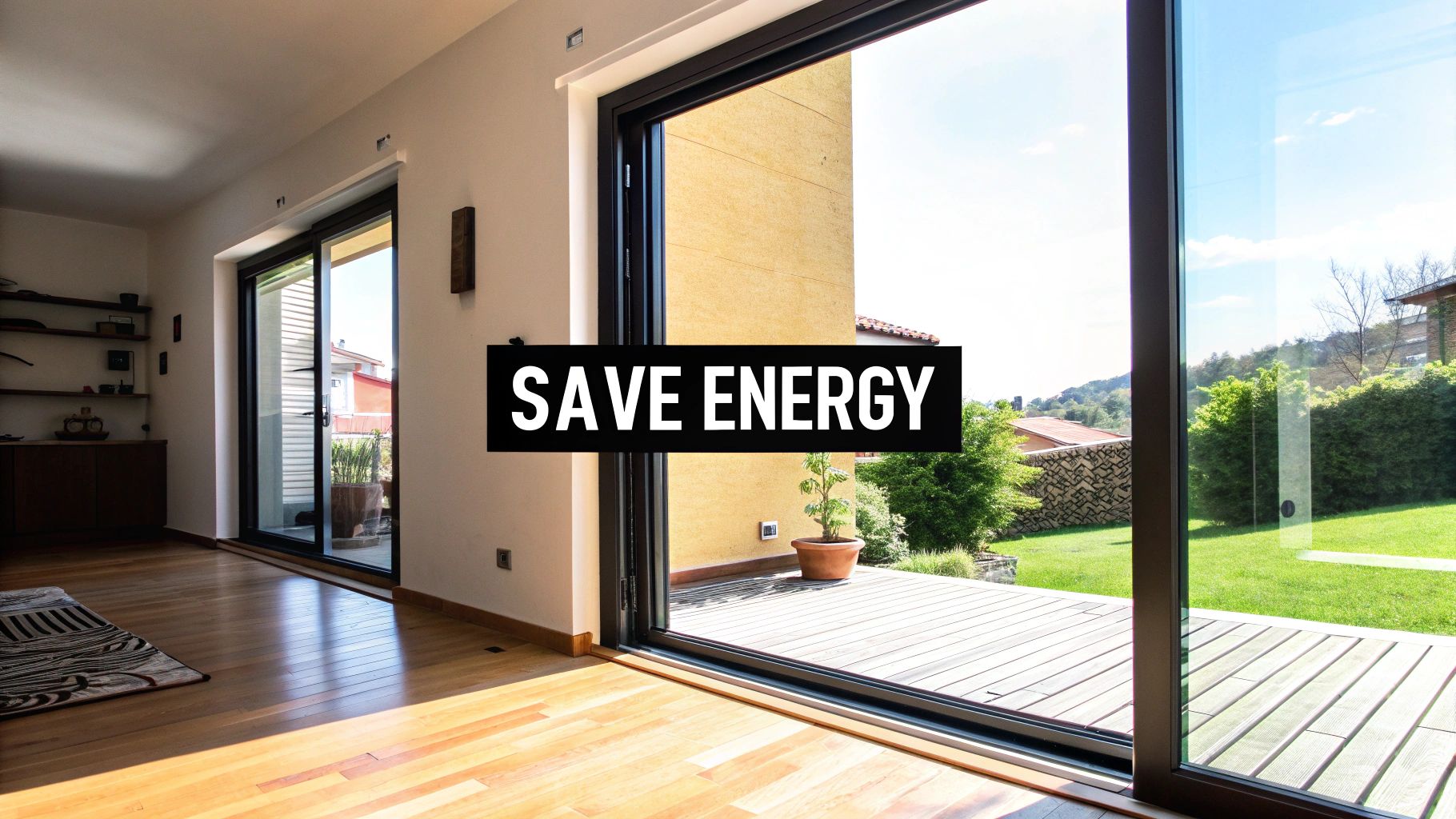
Choosing ENERGY STAR certified energy-efficient sliding doors is a smart investment that offers real benefits. It's not just a cosmetic upgrade; it's a decision that positively impacts your finances and comfort. These doors are built to stringent energy performance standards, resulting in actual cost savings and a more eco-friendly home. This focus on efficiency means lower energy bills and a more pleasant living space.
Rigorous Testing for Real-World Performance
ENERGY STAR certified doors undergo rigorous testing designed to mimic years of use in diverse climates. This testing ensures they can handle daily wear and tear while maintaining optimal performance. Evaluations include air leakage, insulation effectiveness, and resistance to temperature extremes. These standards guarantee your investment provides lasting savings and comfort.
These standards are also customized for specific climate zones. Whether your home is in a hot, humid climate or a cold, snowy one, you can find ENERGY STAR certified doors engineered for your area. This personalized approach maximizes energy savings based on your local weather conditions.
Since 2000, energy-efficient home improvements, like sliding doors, have seen a significant increase. Programs like ENERGY STAR certification, which sets high energy performance standards, have contributed to this shift. Explore this topic further. This growing focus on efficiency reflects increased awareness of the environmental and financial advantages of sustainable building.
Measurable Savings and Improved Comfort
Homeowners and energy auditors frequently report noticeable reductions in air leakage after installing ENERGY STAR certified sliding doors. This means fewer drafts, more consistent indoor temperatures, and less stress on heating and cooling systems. The result? Noticeable savings on energy bills.
Beyond the financial benefits, these doors contribute to a more comfortable home. Improved insulation minimizes temperature fluctuations, keeping your home warm in the winter and cool in the summer. This enhanced comfort improves the quality of life inside your home. You might be interested in: Our product offerings.
Incentives and Rebates That Enhance Value
Many homeowners aren't aware of the tax incentives and rebates available for ENERGY STAR certified products. These incentives can significantly reduce the initial cost, making energy-efficient upgrades even more attractive. Taking advantage of these programs maximizes your return on investment and ensures long-term savings.
Furthermore, exploring different ENERGY STAR certified models helps you find the right balance between performance and budget. Various options cater to different price points and aesthetic preferences, so you can find the perfect door that meets your needs and maximizes energy efficiency. Investing in these doors saves you money and increases your home's overall value.
Maximizing Light While Minimizing Energy Loss
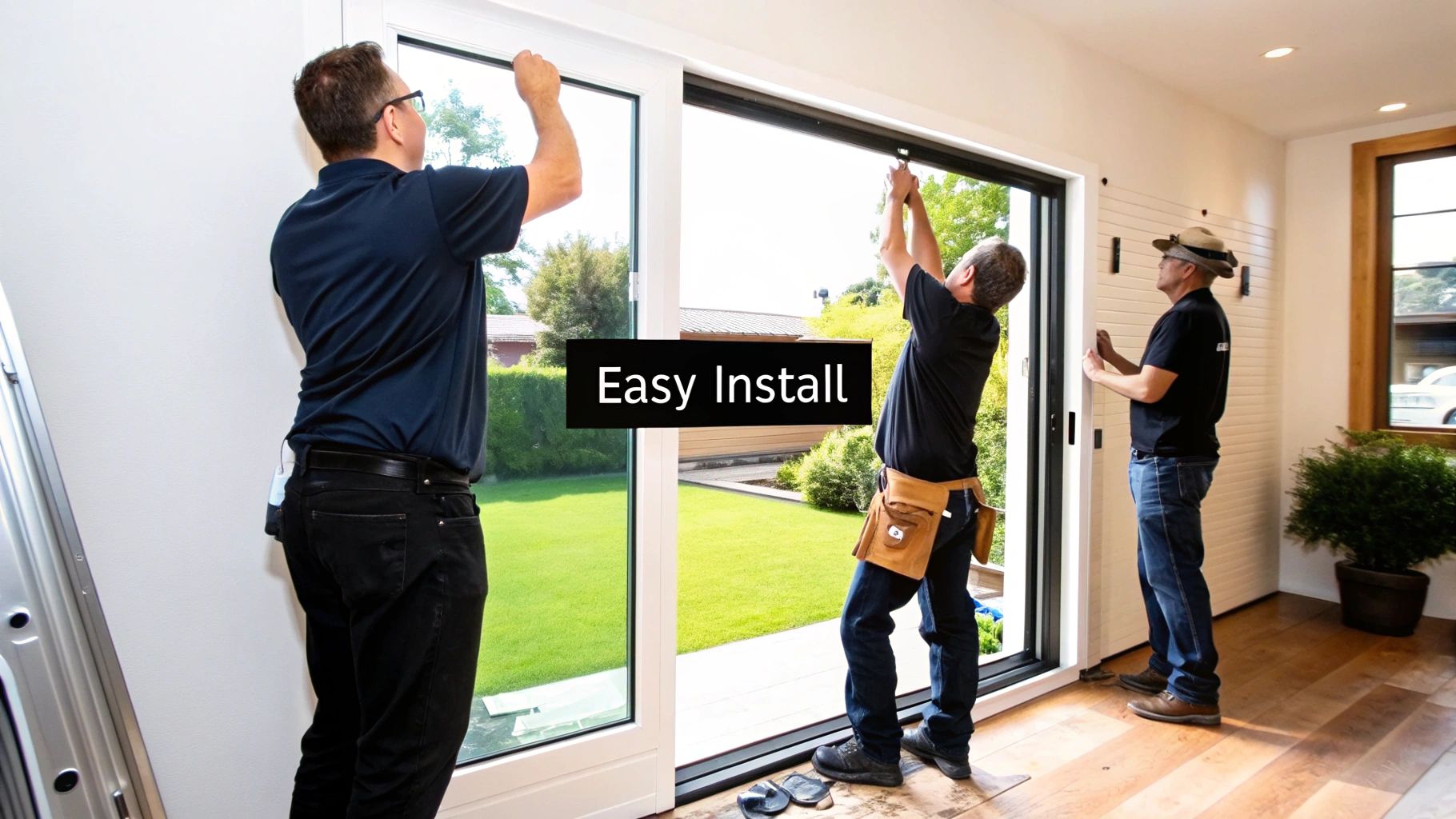
Energy-efficient sliding doors offer a fantastic combination: abundant natural light and reduced energy consumption. This seemingly contradictory pairing is possible due to advancements in glazing technologies and thoughtful design. These improvements transform large glass panels from potential energy drains into assets, creating a brighter, more efficient home.
The Power of Glazing
Modern sliding door technology prioritizes maximizing natural light while improving thermal insulation. Expansive glass panels flood interiors with light, reducing the need for artificial illumination and even contributing to passive heating in winter. Learn more about the energy efficiency of sliding doors. This focus on light transmission greatly impacts a space's ambiance and energy performance.
For instance, Low-E coatings (low-emissivity) on glass minimize heat transfer while allowing visible light through. Multiple panes filled with insulating gas like argon or krypton create a strong thermal barrier. These features allow for larger glass areas without sacrificing energy efficiency, resulting in brighter, more comfortable rooms.
Strategic Placement for Optimal Performance
The placement of your energy-efficient sliding doors plays a key role in maximizing their benefits. South-facing doors capture the most sunlight, offering significant passive solar heating potential during the winter. However, this placement needs careful planning to prevent summer overheating.
This means shading solutions, such as awnings or exterior blinds, become vital to manage solar heat gain in warmer months. Strategic landscaping can also contribute. Deciduous trees provide shade during summer and allow sunlight through in winter.
Real-World Examples of Light and Energy Harmony
Homeowners are successfully integrating energy-efficient sliding doors to create stunning, light-filled spaces that are also energy-conscious. These real-world results demonstrate the potential for achieving both aesthetic and performance goals. One example involved a homeowner replacing outdated sliding doors with energy-efficient models.
The result was a dramatic increase in natural light and a notable decrease in energy bills. The homeowner reduced reliance on artificial lighting and enjoyed a more comfortable indoor temperature all year. You might be interested in: Our collection of energy-efficient sliding doors.
Optimizing Solar Heat Gain: A Seasonal Approach
Maximizing solar heat gain requires a seasonal approach. In winter, allowing sunlight to stream through your energy-efficient sliding doors can significantly cut heating costs. But during summer, excessive solar gain can cause overheating and increased air conditioning use.
To manage this, consider using window films or blinds to regulate sunlight during summer. This lets you enjoy natural light while maintaining energy efficiency. By implementing these strategies, you can maximize light while minimizing energy loss, creating a comfortable and efficient home.
Material Showdown: Finding Your Perfect Door Match
Energy-efficient sliding doors come in various materials, each with unique pros and cons. Understanding these differences is key to choosing the right door for your budget, climate, and style. Let's explore the most popular materials: vinyl, fiberglass, aluminum, wood, and composite.
Vinyl Sliding Doors: Affordability and Efficiency
Vinyl sliding doors are a homeowner favorite thanks to their affordability and excellent energy efficiency. They offer good insulation, keeping your home comfortable and reducing energy bills. Vinyl frames resist rot, rust, and insects, making them low-maintenance. However, vinyl can warp or crack in extreme temperatures, and color choices may be limited.
Fiberglass Sliding Doors: Strength and Durability
Fiberglass provides exceptional strength and durability, withstanding extreme temperature swings without warping or cracking. This makes it a great choice for various climates. Fiberglass also offers excellent insulation, lowering energy costs. Plus, it requires minimal maintenance. The downside? Fiberglass doors are typically pricier than vinyl.
Aluminum Sliding Doors: Sleek and Modern
Aluminum sliding doors are known for their sleek, modern look and slim frames that maximize glass area for abundant natural light. While aluminum conducts heat more readily than other materials, modern aluminum frames use thermal breaks to improve energy efficiency. These breaks minimize heat transfer, making aluminum a viable option for energy-conscious homeowners.
Wood Sliding Doors: Classic Beauty and Insulation
Wood sliding doors offer a classic, elegant appearance and excellent insulation. However, wood needs regular maintenance like painting or staining to protect it from the elements. It's also more prone to rot, insect damage, and warping than other materials.
Composite Sliding Doors: The Best of Both Worlds
Composite doors combine the advantages of multiple materials, boosting performance and durability. Often made from wood fibers and other materials, they provide superior insulation, strength, and weather resistance. Composite doors are ideal for homeowners wanting the beauty of wood with enhanced durability. For more information on various door options, see our guide: Various Door Options and Considerations.
To help you choose the perfect sliding door material, we've put together a comparison table highlighting the key features of each option.
Before we dive into the details, let's introduce a table summarizing the key characteristics of each material. This quick comparison will help you find the best fit for your needs.
Energy Efficient Sliding Door Materials Comparison: This table compares different sliding door materials based on key energy efficiency factors and practical considerations for homeowners.
| Material Type | Typical U-Value Range | Insulation Properties | Durability | Maintenance | Cost Range |
|---|---|---|---|---|---|
| Vinyl | 0.27 - 1.2 | Good | Moderate | Low | Low to Moderate |
| Fiberglass | 0.20 - 0.30 | Excellent | High | Low | Moderate to High |
| Aluminum | 0.16 - 0.40 | Moderate to Good (with thermal breaks) | High | Low | Moderate |
| Wood | 0.20 - 0.30 | Excellent | Moderate | High | Moderate to High |
| Composite | 0.15 - 0.25 | Excellent | High | Low | High |
As you can see, each material presents a unique blend of characteristics. Composite doors offer the highest insulation values, while vinyl remains the most budget-friendly. Aluminum provides a sleek modern aesthetic, and wood delivers classic charm.
Picking the right material is a big step towards maximizing energy efficiency and the lifespan of your sliding doors. Think about your climate, budget, and desired aesthetic when making your choice. This careful approach will ensure you select the ideal door for your specific requirements.
Installation Secrets That Preserve Energy Performance
Even the most energy-efficient sliding door won't live up to its potential if installed incorrectly. The difference between a door that truly saves energy and one that leaks money and comfort often comes down to the installation. Let's explore the key steps for optimal performance, drawing on insights from seasoned installers and energy auditors.
Precise Measuring and Preparation: The Foundation of Efficiency
Accurate measuring and preparation are crucial for preventing thermal bridges. These are areas where heat can easily escape through the door frame, wasting energy and creating uncomfortable drafts. Precise measurements ensure a snug fit, minimizing gaps and maximizing the effectiveness of insulation and weatherstripping. This precise fit is the first step towards energy efficiency.
Careful inspection of the rough opening for any damage or irregularities is also essential. Addressing these issues beforehand creates a smooth, level surface for the door frame, further reducing thermal bridging. This attention to detail sets the stage for long-term energy performance.
Weatherproofing Techniques: Sealing Out the Elements
Professional installers use specialized weatherproofing techniques that go beyond simple caulking. They use high-quality sealants and weatherstripping materials designed for durability and maximum protection against air and water infiltration. This creates an airtight barrier, keeping your home comfortable and energy-efficient.
For instance, expanding foam insulation is often used to fill gaps between the frame and the rough opening, creating a tight seal that blocks air leakage and improves insulation. Self-adhering flashing tape around the exterior frame adds another layer of protection against water intrusion. These extra steps significantly boost the door's resistance to the elements.
The Installation Process: Critical Steps for Success
The installation itself has several crucial steps for energy efficiency. Properly securing the door frame, ensuring a level fit, and meticulously applying insulation and sealant are all vital for minimizing air leakage and maximizing thermal performance. Overlooking these seemingly small details can compromise the door's overall efficiency. You might find helpful tips in other blog posts on our site.
The shimming process is another key element. This involves using small wedges to adjust the door frame for a perfect fit within the rough opening. Precise shimming ensures smooth door operation and prevents gaps that can lead to air leakage, maintaining long-term energy efficiency.
DIY vs. Professional Installation: Weighing the Options
While some homeowners can handle basic door installations, energy-efficient sliding doors often require specialized knowledge and tools. Incorrect installation can negate the energy-saving benefits and even void warranties. Professional installation, though potentially a larger upfront investment, ensures optimal performance and maximizes long-term energy savings. It's an investment that pays off over time.
In conclusion, proper installation is key to realizing the full potential of energy-efficient sliding doors. From precise measuring to specialized weatherproofing, each step plays a vital role in optimal performance. By understanding these key details, you can make informed decisions about your installation and enjoy the comfort and savings of a high-quality, properly installed energy-efficient sliding door.
The Real ROI: What Energy Efficient Doors Actually Save
After exploring technical details and material choices, let's talk money. Specifically, the financial perks of energy-efficient sliding doors. This section dives into the real return on investment (ROI) you can anticipate, going beyond marketing hype to analyze the actual savings.
Understanding Energy Savings and Your Home
Energy-efficient sliding doors offer multiple avenues for reducing energy bills. Improved insulation minimizes heat transfer, meaning less energy is needed to maintain a comfortable temperature inside. Reduced air leakage also contributes to savings by preventing drafts and heat loss. Together, these effects significantly impact your overall energy consumption.
Your actual savings depend on factors like your local climate, energy prices, and the efficiency of your current doors. However, upgrading to energy-efficient sliding doors can typically cut heating and cooling costs by a substantial margin, translating to noticeable savings on your monthly bills.
Calculating Potential Savings Over Time
To grasp the long-term financial benefits, let’s look at a typical cost analysis. The following table illustrates potential savings for different levels of door efficiency:
To help illustrate the potential long-term savings, we've compiled a table showcasing different efficiency levels:
| Efficiency Rating | Avg. Annual Energy Savings | Typical Cost Premium | Payback Period | 10-Year Total Savings |
|---|---|---|---|---|
| Standard | $50 | - | - | $500 |
| Mid-Range | $150 | $500 | ~3 Years | $1,500 |
| High-Performance | $250 | $1,000 | ~4 Years | $2,500 |
This table highlights how higher-efficiency doors, although more expensive upfront, can deliver greater long-term savings. The payback period – the time it takes for energy savings to offset the initial extra cost – is a key metric. As shown, even with a higher initial investment, the long-term savings can be considerable.
Factors Influencing Your ROI
Several factors influence the ROI of energy-efficient sliding doors. Regional energy prices play a significant role; areas with higher energy costs will see a faster return. Climate conditions also affect savings, with homes in extreme climates experiencing greater benefits.
Government incentives and rebates can significantly boost ROI. Many areas offer tax credits or rebates for energy-efficient home improvements, reducing upfront costs and shortening the payback period. These programs vary by location, so research options in your area.
Determining Your Home's Value Proposition
The real value of energy-efficient sliding doors for your home hinges on your individual circumstances. Consider your energy usage, your local climate, and available incentives. Calculating potential savings using online tools and comparing door options will help you make an informed choice.
Ready to explore high-quality, energy-efficient sliding doors? Visit Gladiator Window and Doors today for a wide selection of custom-made options, including extra-large sliding doors, pivot doors, and bi-fold doors. We offer the lowest prices in the USA and a best offer guarantee, ensuring you get the best value. Upgrade your home’s style, comfort, and energy efficiency with Gladiator Window and Doors.







